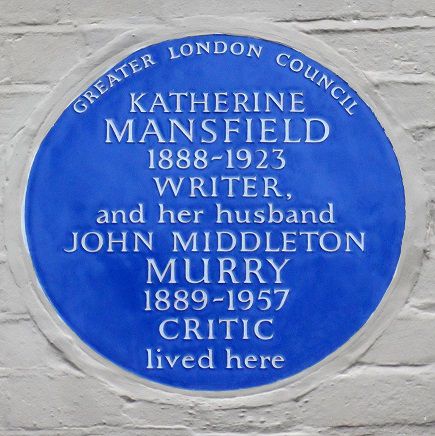CONSTANT MOTION AND KATHERINE MANSFIELD
- 9 March 2015
- Web Master
It is remarkable Katherine Mansfield produced as much work as she did, if you take into account the constant motion of her life after leaving New Zealand for the last time in 1908.
Her contemporary and fellow writer, Virginia Woolf, considered a room of one's own essential to a writer. Mansfield had too many to number: in the space of two years of her life, it is possible to count 26 addresses.

Image: Blue plaque erected in 1969 by Greater London Council at 17 East Heath Road, Hampstead, London NW3 1AL, London Borough of Camden. Courtesy of Wikimedia Commons.
There were bedsits and private hotels, country cottages where she and husband John Middleton Murry dreamed they would live and work in perfect harmony, houses in Cornwall where they attempted communal living with D.H. and Frieda Lawrence, and small villas in the South of France.
The list is long and curiously depressing. So much hope, movement and energy expended - only to be repeated over and over and over again. Possibly the habit of constant motion was in place for so long that, without it, life seemed dull and uneventful. Moving can provide a sense of change or growth or purpose, however, often it is just an onerous task.
Certainly it stimulated Mansfield. She seems at her most observant and creative when she's on a Channel crossing or a train going somewhere - anywhere. Perhaps she enjoyed the delicious sense of peace and surrender it is possible to feel when you are in transit. There is nowhere else, at that moment, you can be.
